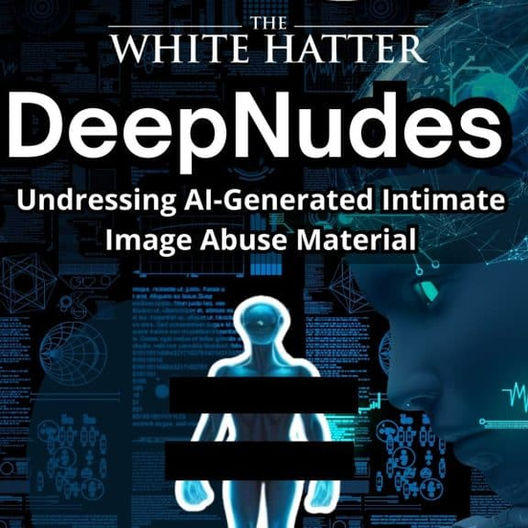Why Are Youth and Teens Using ChatGPT? What We Learned, and It’s Not What You Think!
- The White Hatter

- Jun 13
- 5 min read

Not long ago, when students needed to research a topic, they turned to Google. What they often came across were pages filled with blue links, some useful, but many off-topic, and nearly all cluttered with ads and other distractions. However, today more and more students are turning to ChatGPT as their primary search tool. This shift isn’t just about convenience or cutting corners, it’s a reflection of how youth and teens are evolving the way they search, think, create, and learn.
As parents, caregivers, and educators it’s essential to understand the “why” behind this shift, not just the “what”. When we better grasp how youth and teens are using tools like ChatGPT, we’re in a stronger position to support learning, reinforce ethics, and foster responsible digital creativity.
When a student types a question into a search engine, like Google search, they are often met with an “information haystack”, pages of links, some outdated, some misleading, and some paywalled. It’s what we like to call the “bottom trawl” approach to searching, which cast a wide net and hopes something useful gets caught. Yes, we can narrow that search by using what Google calls “booleans”, but again this takes time and knowledge to do so.
ChatGPT flips that model on its head. It’s more like a scalpel that is sharp, focused, and designed to go directly to the heart of what is being searched. It offers synthesized, relevant responses without the clutter and advertising. For students, this precision isn’t just efficient, it’s empowering.
In other words, they are looking to learn, explore, or compare, and that’s exactly what ChatGPT is built for when compared to a Google Search. It’s fast, it’s direct, and it doesn’t ask users to scroll through a dozen ads and SEO-optimized blog posts to find what they need. ChatGPT doesn’t present a list of results like a traditional search engine. It delivers a single, synthesized response, which changes how users find and interact with information entirely. ChatGPT helps them bypass digital noise and go straight to meaningful content.
Unlike the Google search engine, ChatGPT doesn’t track your browsing habits or flood you with personalized ads. It doesn’t autoplay videos, push pop-up ads, or redirect you into an online algorithmic black hole.
That doesn’t mean ChatGPT should completely replace traditional research methods. It absolutely has its limitations, one of the most notable being the risk of “hallucinations,” where the AI generates information that sounds plausible but is factually incorrect. While ChatGPT can be a powerful tool for synthesis, brainstorming, and clarity, it should be used alongside credible sources and critical thinking, not in place of them. Responsible use means understanding where ChatGPT excels, and where it still needs human oversight and verification.
For this generation of youth and teens, many of whom are acutely aware of online surveillance and data privacy, this matters. Tools like ChatGPT feel safer and more teen-centric. What we have heard clearly from teens is that ChatGPT doesn’t exploit their attention, it focuses it. This is why the other big tech search engine players see ChatGPT as such a threat, because it doesn’t exploit the attention economy that so many other platform use to monetize their profits.
A common concern we hear from parents and educators is that students rely on ChatGPT to do their thinking for them. But what many parents and educators may not see, or fully understand, is that some of the most creative and thoughtful youth we've spoken with are not using ChatGPT to create their work, but to sharpen and improve it.
They come to ChatGPT with an original framework, a rough draft, an outline, a set of key ideas, and ask the tool to help organize, polish, or rephrase it. In this way, ChatGPT becomes more like an editor, a sounding board, or a formatting assistant and not a ghostwriter. Yes, not all students are using it this way, but many are, especially those whose educators have shown them how to do so. This is again why digital literacy, especially when it comes to AI, is so important.
For example, a teen showed us how they had a draft of an assignment written in their own words but felt it lacked a strong persuasive tone. Instead of starting over, they used ChatGPT and asked it to rephrase their writing to sound more convincing or emotionally resonant. This use of ChatGPT helped them refine their message without compromising their original intent.
Another teen shared with us how they created a rough outline for a research project and used CharGPT to organize it for clarity. By pasting that outline into ChatGPT, they received structured suggestions for improving the logical flow, coherence, and even identify missing elements. This allows them to strengthen their foundational work before committing to a full draft.
In each case, the idea belongs to the teen. ChatGPT simply helps express it better. That’s not cheating. That’s leveraging a tool responsibly and intelligently, just like using a calculator for math, a spelling and grammar checker like Grammarly for essays, or a design app like Canva for a school presentation.
When students use ChatGPT to amplify rather than outsource their thinking, they’re demonstrating exactly the kind of digital literacy, critical thinking, and creative autonomy that we should be nurturing.
In fact, these students are learning how to collaborate with technology, an essential skill for the future workforce. They’re not passive consumers of content, they are active co-creators. That’s a huge shift from the “copy-paste” mindset we often hear and fear when it comes to ChatGPT.
*** Note ***
We have spoken with many educators who are doing the same thing with ChatGPT, such as helping them to create and format lesson plans which they have found is a huge time saver.
Most students aren’t using ChatGPT because they’re lazy. They’re using it because it feels like a tool built for them, a digital tool that is intuitive, focused, efficient, and respectful of their time. For many, it helps lower barriers to entry when it comes to writing, learning, and expressing themselves.
As parents, caregivers, and educators our job shouldn’t be to ban these tools, it should be to help our kids use them wisely. That means asking better questions, having more informed conversations, teaching digital literacy, educating ourselves, and modelling curiosity rather than fear.
Remember, It’s about preparing the today’s generation of youth and teens to think critically, create boldly, and collaborate responsibly in a world where AI, such as ChatGPT, is here to stay.
*** Note ***
A new meta-analysis published in May 2025 found that when ChatGPT is thoughtfully integrated and scaffolded within educational settings, it can enhance learning outcomes, improve learning prediction, and support higher-order thinking. Interestingly, this aligns closely with how the teens we interviewed described using ChatGPT, as highlighted earlier in this article (1).
Digital Food For Thought
The White Hatter
Facts Not Fear, Facts Not Emotions, Enlighten Not Frighten, Know Tech Not No Tech
References:














